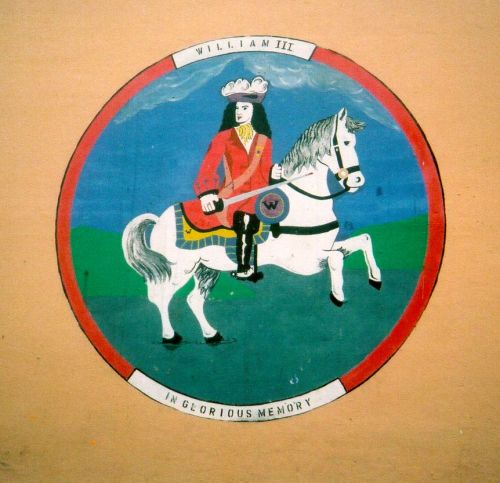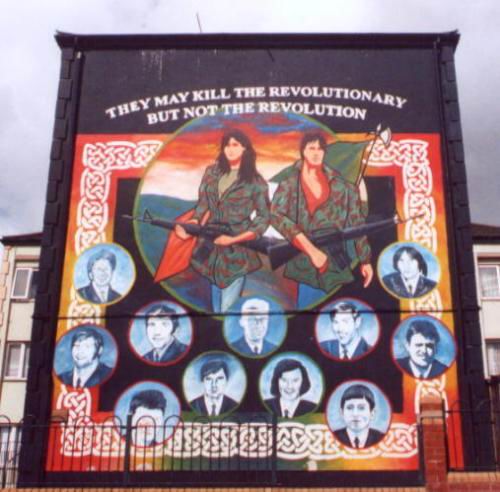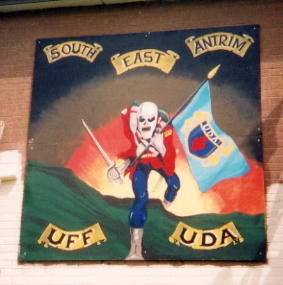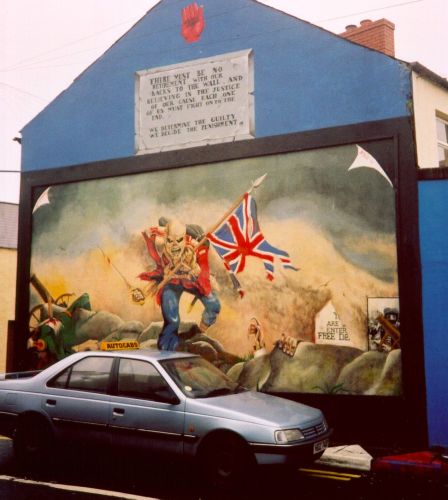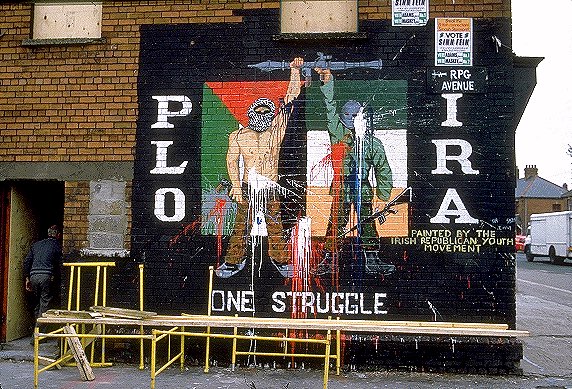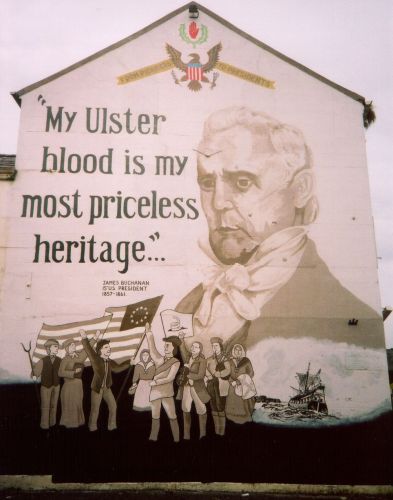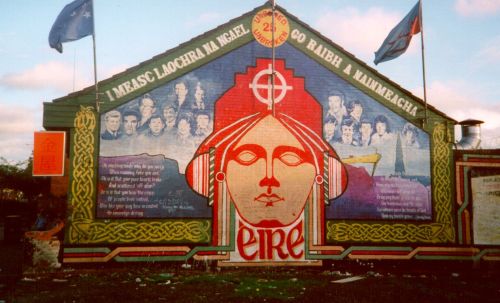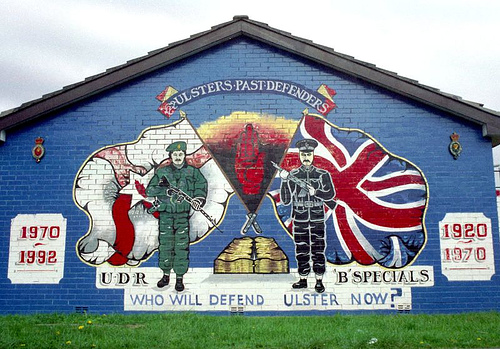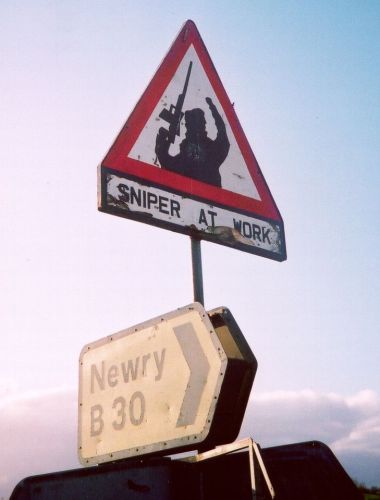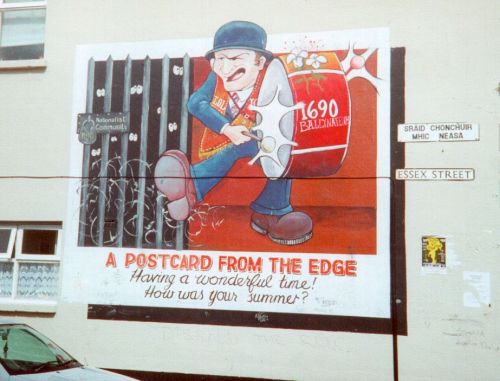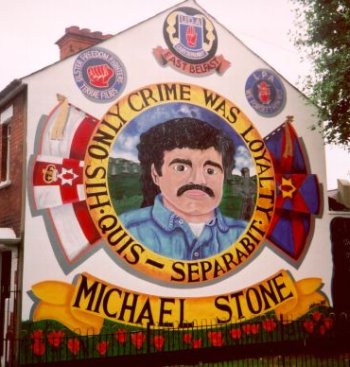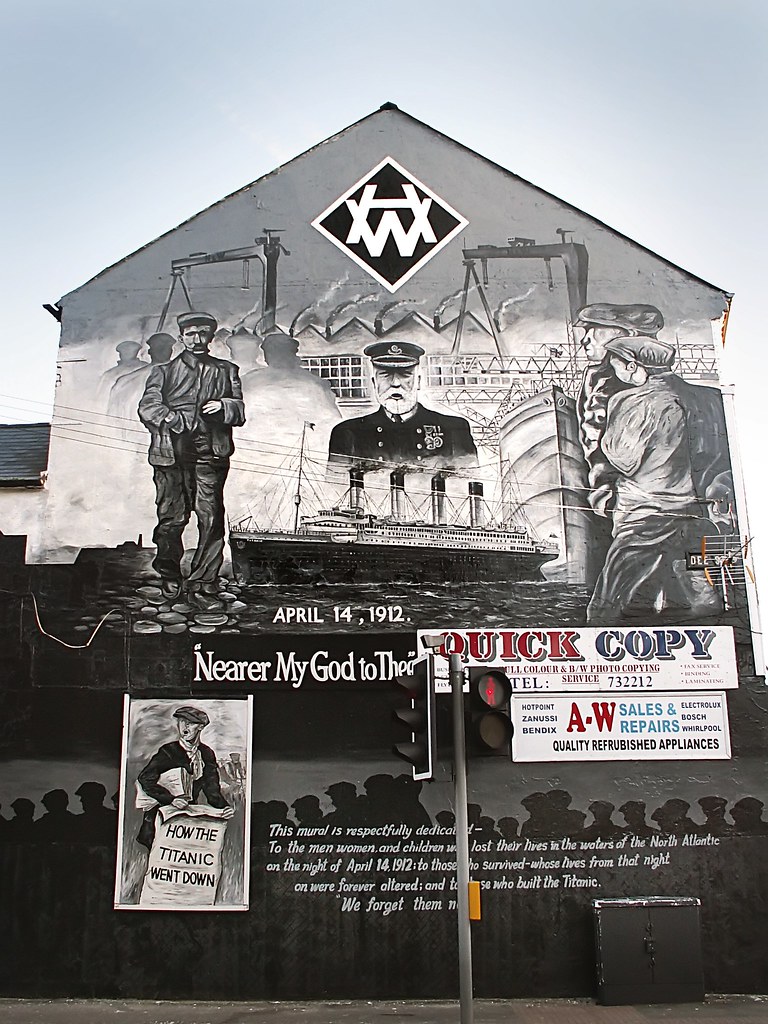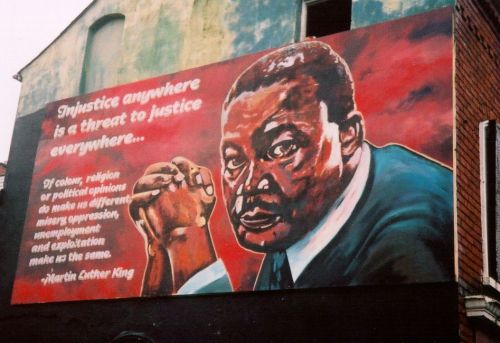I found this article in The Canberra Times, dated March 17th, 1988. It's a state of Dublin piece related to that year's "Millennium" celebrations. That year Dublin went Viking mad, we had 50ps galore and this single was released. It refers to the then Lord Mayor Of Dublin Carmencita Hederman and the writer Frank McDonald. McDonald has been a long time advocate for more considered planning of our urban environment and is the author of books such as The Construction Of Dublin and Chaos At The Crossroads. The article also includes a contribution from Senator David Norris , erstwhile Irish Presidential candidate, most recently notable for the Fannygate imbroglio. The article was written by Carol Craig. I'm happy to report that number 26 Fishamble Street is still extant. Despite the passage of a quarter century many of the issues raised in this piece still resonate, hence my posting it here. Since this article didn't come replete with too many images I've found some Dublin 1988 images to augment this post.
Getting the year wrong is the not the worst thing facing Dublin's millennium celebrations. Among the razzmatazz and the genuine outpouring of affection is a chorus of voices crying that what was once one of Europe's most beautiful capitals is fast losing the right to claim that it is even a shadow of its former self.
Dublin's Lord Mayor, Alderman Carmencita Hederman, underlined the point this month when she awarded the first of the "Millennium Medals" to those who tried, and failed, to save the site of the thousand-year-old heart of the city, the first Viking settlement at Wood Quay.
Some who have already made the millennium tour comment that the fabric of the historic city centre is badly frayed, but add, thank God, traditional Dublin warmth is still alive and talking in the pubs.
Irish journalist Frank MacDonald, author of the book The Destruction of Dublin, says "We don't really have a city to celebrate. A total of 160 acres in the centre of Dublin are derelict, in addition to a host of tumble down buildings and vacant and potentially vacant buildings. The inner city has essentially been abandoned. The population of the inner city has been halved in the last 25 years."
City Manager Frank Feely was a guest at the millennium medal ceremony. As the city's chief bureaucrat, Feely is frequently blamed for the activities of the city's road engineers. According to Ireland's respected conservation group, An Taisce, road widening is now the single biggest cause of the destruction of the city's historic buildings.
At the beginning of the year, Lord Mayor Hederman led the city council to defeat a highly unpopular scheme to run a six-lane ring road past Dublin's second oldest cathedral. However, the 800-year-old St. Patrick's is still going to have to endure four lanes almost at its front door if the engineers have their way.
It is not that Feely, a large man with charm and a sense of humour, has no concern for the city. It was his idea to hold the millennium celebration in the first place.
"I saw it has having three threads, literature, history, culture, stimulating interesting in Dublin and something harder to put your finger on, something abstract. To inspire confidence, a bit of pride."
Having missed the chance to celebrate the founding of the city, now put at 841 AD, and having almost a decade to go before the 1000-year anniversary of the granting of the first city charter, Feely suggested celebrating the year in which an Irish king defeated the Viking king of Dublin and forced each household to pay him tribute of an ounce of gold.
Historians have now pointed out that because of a change in the calendar this actually happened 999 years ago. Commenting on the mistake, Irish Senator David Norris said, "like all these things there is an element of fiction, no city ever started on a particular day. I rather like the idea of celebrating the one year in which nothing happened." Norris adds, the central idea is to "harness the energy for the good of the city."
Feely claims the corporation is doing that, pointing to the construction of badly needed pedestrian malls, the revamping of the shop fronts on Dublin's main thoroughfare and the planting of thousands of trees. But, warns An Taisce, too much attention to these could cover up the real problem of the city - the fact that there are a number of historic areas still under threat.
An Taisce's spokesperson for Dublin, Ian Lumley, puts a warren of narrow streets leading from the south side of the River Liffey in the centre of the city at the top of the list. Called Temple Bar after its main street, a modern map of the area is almost the same as the one from the 18th century shown on the back of the Irish £10 note. The buildings are a mix, houses built in the 1700s, turned into shops in the eighteen hundreds, a few early 20th-century factories thrown in. Many of the streets are still cobbled and the sidewalks still made of granite blocks.
In the past five years it has become the closest thing Dublin has to New York's Greenwich Village or a Parisian Left Banks. Rents are cheap and, says Christine Bond, chairman of the board at Temple Bar Studios, the only low rent studio space for artists in the city, "It is a place where lots of younger people could get in and get something going."
The area was scheduled for road widening but plans have changed. Now the threat is the fact that the government transportation company which owns 8 per cent of the buildings in the area is being urged by the central government to sell them off to deal with the cash crisis caused by Ireland's huge national debt. Agents for large developers are already looking over the area.
On the edge of Temple Bar is one of the oldest houses in the city. Number 26 Fishamble Street probably dates from the early 1700s. Its owners, the Casey family who have had the house for at least 190 years, received one of the "Millennium Medals" for maintaining their house against the odds. Last year it almost fell down when the corporation demolished a house next door it claimed was unsafe, apparently destabilising number 26 in the process.
Commenting on the corporation action, Mrs Enda Casey said, "Really and truly it is maddening what they have done to the city." Frank MacDonald thinks the attitude towards the preservation is a "cultural problem". Dublin's golden age was the 18th century. Dublin Georgian architecture is largely domestic rather than monumental. It is houses, shops, pubs. It was built largely for the enjoyment of the British-linked Protestant rulers of Ireland while the majority of Catholic Irish lived in hovels and slums. For many Irish the buildings of the period are a symbol of the colonial past. "It is tied up with the idea of 800 years of oppression and the like. The Georgian heritage wasn't really seen as Irish despite the fact that it was all built in Ireland by Irish workmen."
By the early 20th century many of the old Georgian buildings had become slums. "For years since [Irish playwright] Sean O'Casey's time the perception of the inner city was that it was just a slum. The idea has been that people, for the good of their health, need to be cleared out of it."
Describing the situation at the end of English rule, Feely refers to "rich town houses being turned into tenements."
"It made us into the disgrace of Europe in terms of disease and infant mortality," he said. "It made housing a top priority. The first thing you've got to do in any city is give people the basis of living."
The argument between the corporation and conservationists is how much of the basis comes from history and heritage. Frank MacDonald says he has seen students in tears over what is now happening in the city.
"I think there is a sense that the younger generation of this city feel they have been robbed of something very precious - the possibility of living in a great European city," he said..
Senator Norris, who has almost single-handedly saved an entire Georgian street and who believes Dublin can return to something of its former glory, hopes the millennium celebrations may have an effect: "The 360 odd days of 1988 will be used to change attitudes, to go into the next decade with something of hope rather than pessimism."
Tuesday, July 23, 2013
Wednesday, July 10, 2013
Ireland from the Life archives. (1940s-1970s)
Not life as in real life but Life as in the American photo journalism weekly whose heyday spanned from the late 1930s until the 1970s. The publication really came into its own during World War II and was the source of the seminal WW2 kiss photo, which may or may not have been sexual assault. Here is a selection of interesting images depicting Ireland that I gleaned from the magazine's archives. They date from the 1940s until the 1970s and as can be seen, vary widely in tone.
Here's a comely barmaid at the bar in Shannon Airport, 1948. This photo was taken at a time when Shannon was becoming an important refueling stop in transatlantic aviation. In the year of the Gathering I'm sure images echoing this one abound.
A 30 year old Mr. Brendan Behan taking a wee sup sometime in 1953.
British soldiers in Newry, Co. Down, c.1972. A reader kindly identified the church in the background as Newry Cathedral.
Here's the picturesque harbour at Carna, Co. Galway, in 1946.
This is the Falls Road, on the corner of Waterford Street, in 1941. In the archives it is described as a "Catholic Ghetto".
Ormond Quay, Dublin, 1943.
Auld wans in a Dublin pub, c1953. This image as well as the image above of Brendan Behan were part of a series that accompanied an article on the playwright Sean O'Casey.
This image shows advertising for contemporary live entertainment in Dublin in 1943. Can anyone tell me which church that is in the background?
These lads were new army recruits, at the Curragh, Co. Kildare in 1940. Although the Irish Free State was neutral during World War II, many young soldiers, including perhaps some of those photographed above, deserted in order to join the British Army and fight against the Nazis.
Bachelor's Walk, Dublin, 1948. It's worth noting the relative paucity of vehicular traffic as well as the road being two way at the time. The Ha'Penny Bridge can be seen in the background to the left.
A British soldier, interrogating a stylish individual, outside a butcher shop somewhere in Northern Ireland, 1972. The graffito says "McShane wants to ---- anywhere." I doubt it is referring to Ian McShane. Next door there's a boutique.
Irish Soldiers cleaning an armoured car at the Curragh Camp, 1941. This vehicle would have been all that stood between freedom and Nazi domination had Operation Green ever come into effect.
Trinity College Dublin, 1946. This was in the twilight days of the old trams.
Ulster Defence Volunteers, being trained by the B-Specials, somewhere in Northern Ireland, 1941.
Lady hanging washing in a Dublin "slum", sometime in 1948. I'm not sure where this was taken.
Here's a comely barmaid at the bar in Shannon Airport, 1948. This photo was taken at a time when Shannon was becoming an important refueling stop in transatlantic aviation. In the year of the Gathering I'm sure images echoing this one abound.
A 30 year old Mr. Brendan Behan taking a wee sup sometime in 1953.
British soldiers in Newry, Co. Down, c.1972. A reader kindly identified the church in the background as Newry Cathedral.
Here's the picturesque harbour at Carna, Co. Galway, in 1946.
This is the Falls Road, on the corner of Waterford Street, in 1941. In the archives it is described as a "Catholic Ghetto".
Ormond Quay, Dublin, 1943.
This image has probably been reproduced a lot in recent weeks since the 50th anniversary of JFK's visit to Ireland occurred recently. It's John F Kennedy being snogged by his cousin in Dunganstown, Co. Wexford and of course dates from 1963.
Auld wans in a Dublin pub, c1953. This image as well as the image above of Brendan Behan were part of a series that accompanied an article on the playwright Sean O'Casey.
This image shows advertising for contemporary live entertainment in Dublin in 1943. Can anyone tell me which church that is in the background?
These lads were new army recruits, at the Curragh, Co. Kildare in 1940. Although the Irish Free State was neutral during World War II, many young soldiers, including perhaps some of those photographed above, deserted in order to join the British Army and fight against the Nazis.
Bachelor's Walk, Dublin, 1948. It's worth noting the relative paucity of vehicular traffic as well as the road being two way at the time. The Ha'Penny Bridge can be seen in the background to the left.
A British soldier, interrogating a stylish individual, outside a butcher shop somewhere in Northern Ireland, 1972. The graffito says "McShane wants to ---- anywhere." I doubt it is referring to Ian McShane. Next door there's a boutique.
Irish Soldiers cleaning an armoured car at the Curragh Camp, 1941. This vehicle would have been all that stood between freedom and Nazi domination had Operation Green ever come into effect.
Ulster Defence Volunteers, being trained by the B-Specials, somewhere in Northern Ireland, 1941.
Lady hanging washing in a Dublin "slum", sometime in 1948. I'm not sure where this was taken.
Wednesday, June 19, 2013
Postcards Of Belfast (Early 1900s)
I've found that the postcard posts have thus far been my most popular so here's a selection of postcards depicting Edwardian Belfast. They show the city's oft-lauded industrial might, its grand architecture, its commerce, and scenic spots. These postcards bring to mind the fascinating photographs in the book Made In Belfast by Trevor Parkhill and Vivienne Pollock which describes the industrial and commercial vibrancy of Belfast at the time. I found the book somewhat of a revelation. I had been so used to seeing Ireland at the time, north and south, depicted as agrarian, bucolic or just plain primitive.
This post card shows Belfast Castle looking slightly eerie.
Belfast City Hall took 8 years to construct and was completed in 1906. It's a beautiful building and to this day serves as a fantastic focal point for Belfast. When I sat outside it a few years ago eating lunch a man offered to sell me a volume of Marvel comics that he produced from under his shirt.
Harland and Wolff's famous shipyards, what can I say that hasn't already been said? They're still a point of pride amongst many in Belfast. At the time depicted they were a if not the major employer in Belfast. Its most famous ship was of course the Titanic, which some contemporary visitors to Belfast expect to see there. Thankfully now their disappointment can be allayed by the recently constructed Titanic Museum. Other famous ships to come from the yards include the Titanic's sister ship, the Olympic, and the HMS Belfast which under the pretense of being a museum ship protects London from Cybermen and Daleks.
Queen's University in 1910. I can't think of anything else to write other than my dad attended the university roughly 50 years later and he and his pals used to congregate in the Student Union in order to huddle around a television to watch the Flintstones.
Queen's Bridge around 1900 showing some of the city's industrial activity at the time.
This postcard shows Belfast's main shopping thoroughfare, Royal Avenue. All the shops shown are now KFCs, McDonald's and Carroll's tricolour inflatable hammer dealers. The trams are in tram heaven.
Shaw's Bridge still stands, although it has long since been superceded by a snazzier more modern affair nearby. Here's the bridge from another angle.
This post card shows Belfast Castle looking slightly eerie.
This grand looking building, completed in 1906, was the home of Belfast Tech, aka the Black Man Tech, until 2011. If you'd like to find out more about this educational institution here's a documentary I found that goes into its history.
I have no idea if the charming looking building still stands, perhaps a local reader can enlighten me, but I can safely say that the people enjoying themselves in the boat are long gone unless one of them happens to be Highlander.
This colourful postcard shows the Palm House in Belfast's lovely Botanic Gardens. It looks pretty much the same today, social media notwithstanding.
Belfast City Hall took 8 years to construct and was completed in 1906. It's a beautiful building and to this day serves as a fantastic focal point for Belfast. When I sat outside it a few years ago eating lunch a man offered to sell me a volume of Marvel comics that he produced from under his shirt.
Harland and Wolff's famous shipyards, what can I say that hasn't already been said? They're still a point of pride amongst many in Belfast. At the time depicted they were a if not the major employer in Belfast. Its most famous ship was of course the Titanic, which some contemporary visitors to Belfast expect to see there. Thankfully now their disappointment can be allayed by the recently constructed Titanic Museum. Other famous ships to come from the yards include the Titanic's sister ship, the Olympic, and the HMS Belfast which under the pretense of being a museum ship protects London from Cybermen and Daleks.
High Street, Belfast, with Belfast's answer to Big Ben or the Leaning Tower Of Pisa, the Albert Memorial Clock, in the background.
Queen's University in 1910. I can't think of anything else to write other than my dad attended the university roughly 50 years later and he and his pals used to congregate in the Student Union in order to huddle around a television to watch the Flintstones.
Queen's Bridge around 1900 showing some of the city's industrial activity at the time.
This postcard shows Belfast's main shopping thoroughfare, Royal Avenue. All the shops shown are now KFCs, McDonald's and Carroll's tricolour inflatable hammer dealers. The trams are in tram heaven.
Shaw's Bridge still stands, although it has long since been superceded by a snazzier more modern affair nearby. Here's the bridge from another angle.
Tuesday, June 18, 2013
Political Murals of Northern Ireland (1970s - 2010)
This is a modified version of a post I did on a messageboard in 2010. It was written primarily for people from outside Ireland. The images used were gleaned from various sources online.
Political Murals of Northern Ireland
There is a rich tradition in Northern Ireland of painting political murals. As far as I am aware, prior the Troubles, some murals did exist, usually depicting William of Orange (e). However since 1969 their popularity has increased and there have been several thousand painted by artists on both sides of the community. These murals are generally, though not exclusively on the gable ends of houses, in working class areas of the main cities. Although murals can be seen elsewhere the majority exist in these locales. They deal with a variety of themes, generally related to the sociopolitical identity of the local community. Some commemorate fallen comrades (a), some celebrate paramilitary factions (b), others mark historic events, others still, especially in more recent years celebrate the local culture in non-divisive ways by emphasising mythology, community progress etc.
a)
b)
The murals typically include some of the iconography associated with one or other of the communities but also sometimes incorporate pop cultural references. Murals have been documented that have incorporated Eddie the Iron Maiden mascot, Bart Simpson and other cartoon characters(d).
d)
One of the main differences between Loyalist/Unionist murals and Republican/Nationalist ones is that the latter are often willfully multicultural, depicting solidarity with other national struggles throughout the world (d). This internationalist approach is a legacy of Irish radical Republicanism's traditional left wing ethos and international support base. Murals have been painted that include statements of support for Palestine, the Basque Country, FARC in Colombia, Cuba, and other left-wing national struggles. In recent years, as the violence has subsided more and more of these murals display political commentary on the international scene. Those Loyalist/Unionist murals that look abroad tend to look to the Ulster-Scots elsewhere, in Scotland or America (e). For example, a number of murals portray American Presidents of Ulster-Scots heritage, of which there are quite a few.
d)
e)
Talking purely about aesthetics some are beautifully done, using either graphic design style work or just a nice attention to detail (f). While many seem the competent work of trained or practiced painters others are quite folksy are badly drawn. Some are cartoonish or kitsch in an unintended way (g). The menace or gravitas of some murals is deflated by the amateurishness of the rendition.
f)
g)
Some murals are done with humorous intent albeit a political underpinning and are often blackly comic (g). Indeed some subvert the ideas and ideals of the communities for other purposes in a humorous way (h).
g)
h)
For obvious reasons, there are a number of murals that lionise convicted murderers, in the mural below (i) "His only crime was loyalty" would more accurately read "His only crime was murdering people at a funeral."
i)
Not all murals are overtly divisive in a political sense. Many, especially recent ones describe events in Northern Irish and wider world history such as the Titanic (j)which was constructed in the Belfast shipyards. Some murals convey commentary on contemporary international events such as the Iraq invasion of 2003 (k).
j)
k)
These type of murals by and large don't exist in the Republic of Ireland, nor to the best of my knowledge in Britain. I have heard that in some Irish communities like South Boston in the US you can see some of these murals. There is a mini-industry in Northern Ireland currently of mural tourism. You can get a taxi tour or view them from a tour bus. I recommend such a tour to a visitor to Belfast or Derry as the drivers can provide stories and context for the murals.
To view more murals and find out more information please visit this site: http://cain.ulst.ac.uk/mccormick/
Subscribe to:
Posts (Atom)
































